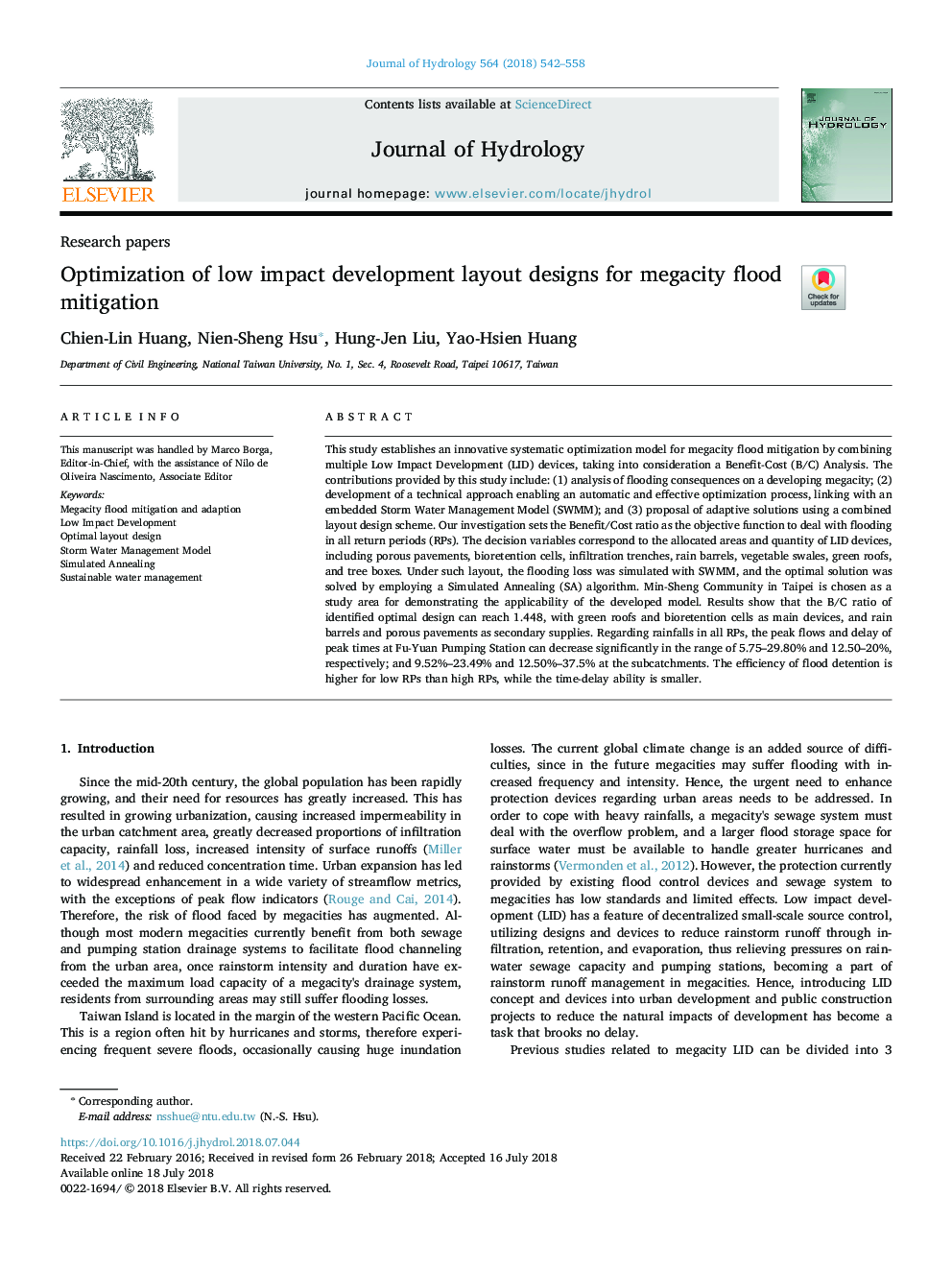| Article ID | Journal | Published Year | Pages | File Type |
|---|---|---|---|---|
| 8894493 | Journal of Hydrology | 2018 | 17 Pages |
Abstract
This study establishes an innovative systematic optimization model for megacity flood mitigation by combining multiple Low Impact Development (LID) devices, taking into consideration a Benefit-Cost (B/C) Analysis. The contributions provided by this study include: (1) analysis of flooding consequences on a developing megacity; (2) development of a technical approach enabling an automatic and effective optimization process, linking with an embedded Storm Water Management Model (SWMM); and (3) proposal of adaptive solutions using a combined layout design scheme. Our investigation sets the Benefit/Cost ratio as the objective function to deal with flooding in all return periods (RPs). The decision variables correspond to the allocated areas and quantity of LID devices, including porous pavements, bioretention cells, infiltration trenches, rain barrels, vegetable swales, green roofs, and tree boxes. Under such layout, the flooding loss was simulated with SWMM, and the optimal solution was solved by employing a Simulated Annealing (SA) algorithm. Min-Sheng Community in Taipei is chosen as a study area for demonstrating the applicability of the developed model. Results show that the B/C ratio of identified optimal design can reach 1.448, with green roofs and bioretention cells as main devices, and rain barrels and porous pavements as secondary supplies. Regarding rainfalls in all RPs, the peak flows and delay of peak times at Fu-Yuan Pumping Station can decrease significantly in the range of 5.75-29.80% and 12.50-20%, respectively; and 9.52%-23.49% and 12.50%-37.5% at the subcatchments. The efficiency of flood detention is higher for low RPs than high RPs, while the time-delay ability is smaller.
Keywords
Related Topics
Physical Sciences and Engineering
Earth and Planetary Sciences
Earth-Surface Processes
Authors
Chien-Lin Huang, Nien-Sheng Hsu, Hung-Jen Liu, Yao-Hsien Huang,
